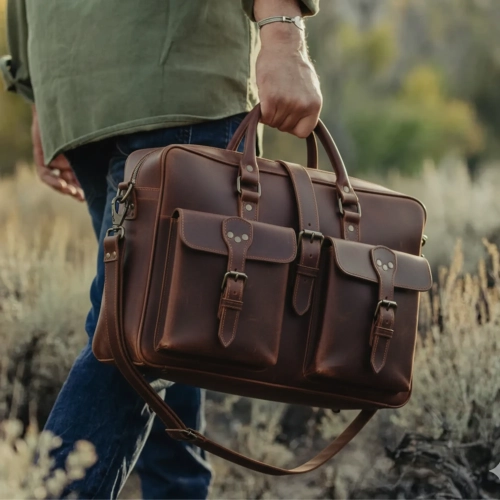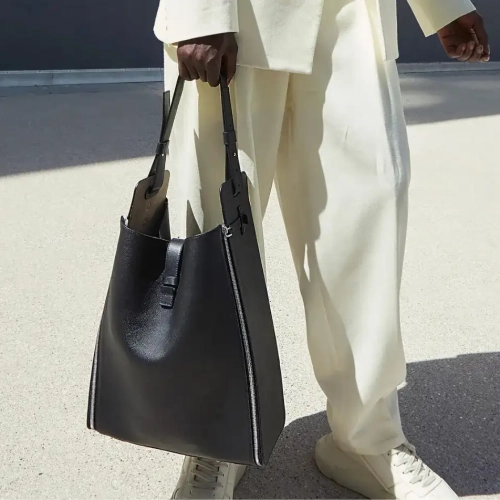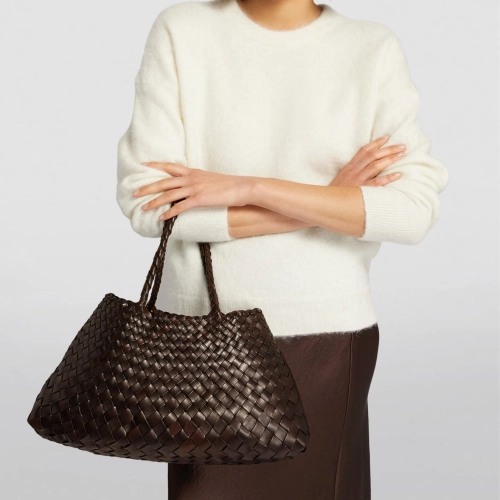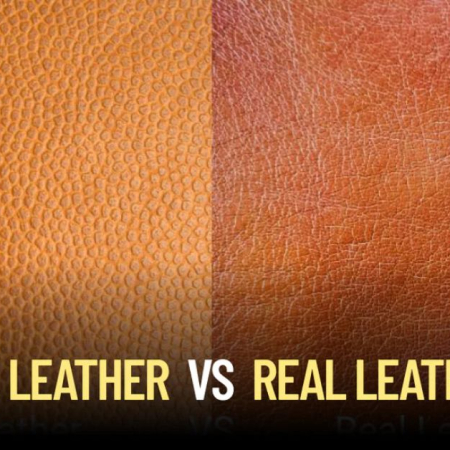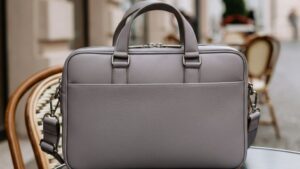No products in the cart.
Return To Shop
0
$0.00
0
No products in the cart.
Return To Shop
Shopping cart (0)
Subtotal: $0.00
Free shipping over 49$
0
$0.00
0
No products in the cart.
Return To Shop
Shopping cart (0)
Subtotal: $0.00
Free shipping over 49$
FREE SHIPPING+30 DAY RETURNS
Order Now - 3 Buyers Get 100% Order Value Back Daily
0
$0.00
0
No products in the cart.
Return To Shop
Shopping cart (0)
Subtotal: $0.00
Free shipping over 49$
So what is PU leather? We have either seen this material or heard about it when we have been going shopping over the last days buying furniture, bags, or jacket. Polyurethane leather (also known as PU leather) has swept the industry regarding synthetic leather.
In this article we discusses the what PU leather is made of, its advantages, usefulness, and all factors to consider when you plan to get your next purchase.
Understanding What Is PU Leather: Definition and Basics
So What does PU leather mean? PU leather is the abbreviation of polyurethane leather, which is also a synthetic substitute to genuine leather made by the help of sophisticated polymer technology.
As compared to conventional leather that is made out of animal hides, the question of what is PU leather is basically a type of fake material that is made to mimic the look, feel, and properties of real leather.
Cutting edge chemistry and textile production come together in PU material. The coating is mainly polyurethane leather to give the iconic leather-like surface and then the base layer guarantees the integrity and flexibility.
The new usage of leather substitutes has also gained popularity over the years as industries find it stylish to use PU leather material.
What Is PU Material? Core Components Explained
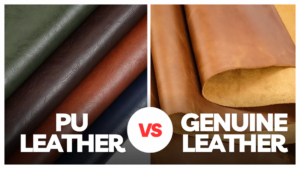
Understanding what PU material and What is a pu leather consists of helps explain its performance characteristics:
- Polyurethane polymer: The primary synthetic compound
- Base fabric: It is normally polyester, cotton or canvas
- Chemical additives : Chemical additives Plasticizers, stabilizers, and colorants
- Treatments on the surface: Grain patterns and protective coats.
What Is PU Leather Made Of? Manufacturing Process Deep Dive
What is What is PU leather made out of involves a sophisticated two-layer construction system.
What is OU leather? (That’s a frequent typo by the way – ppl usually mean PU!) What is PU fabric What What material is PU leather Let us dissect it:
Base Layer Construction
The foundation of PU leather material typically includes:
- Textile substrate: Woven or non-woven fabric backing
- Adhesive layer: Bonds the polyurethane to the base
- Reinforcement: Additional fibers for strength and durability
Polyurethane Coating Application
How is PU leather made? The process involves:
- Liquid polyurethane preparation: Mixing polymers with additives
- Application methods: Coating, laminating, or casting techniques
- Curing process: Heat and pressure treatment for bonding
- Finishing: The Surface: embedded grain structures and protective remedies
- Quality control: Durability testing-flexibility testing-appearance testing
This process of manufacturing establishes what PU leather is characterized by; high quality across the board, the ability to customise appearance and cost effectiveness of production.
Types of PU Leather Material: Quality Classifications
Standard PU Leather
Standard polyurethane leather that can be used overall:
- Thickness: average thickness= 0.8-1.2mm
- Durability: average 2-3 years life 2
- Applications: low-end furniture, décor, simple upholstery
Premium PU Leather: Enhanced Quality Features
What is premium PU leather? This upgraded version offers:
- Superior grain patterns: More realistic leather texture
- Enhanced flexibility: Better hand feel and drape
- Improved durability: 4-6 years expected lifespan
- Advanced coatings: UV resistance and stain protection
100% PU Synthetic Leather
What is 100% PU? This completely synthetic option provides:
- Vegan certification: Zero animal-derived components
- Consistent properties: Uniform thickness and appearance
- Color stability: Fade-resistant pigments
- Environmental considerations: Reduced animal agriculture impact
Is PU Leather Real Leather? Comprehensive Comparison
Is PU leather real leather? No, PU leather is entirely synthetic. Here’s What is leather pu compares to genuine leather:
PU Leather vs Genuine Leather: Key Differences
| Aspect | PU Leather | Genuine Leather |
| Origin | Synthetic polymer | Animal hide |
| Cost | 50-80% less expensive | Premium pricing |
| Durability | 2-6 years typical | 10-20+ years possible |
| Maintenance | Low maintenance | Requires conditioning |
| Water resistance | Naturally water-resistant | Requires treatment |
| Breathability | Limited airflow | Natural breathability |
What Material Is PU Leather Best Suited For?
PU material excels in applications requiring:
- Water resistance: marine upholstery, garden furniture
- Easy maintenance: Commercial seating, medical furniture
- JP 1.Cost efficiency: mass production, cheap buying JP 1.
- Vegan alternatives: Cruelty-free addiction Vegan fashion and accessories
Whether PU material is good or not lies completely in the hands of your needs and areas of concern.Material pu itself uniquely to application in some instances.
How Long Does PU Leather Last? Durability Factors
How long does PU leather last depends on multiple variables:
Lifespan Expectations by Quality Level
- Standard PU: 2-3 years with regular use
- Premium PU leather: 4-6 years well taken care of
- Commercial grade: 3-5 years in heavy traffic set ups
- Specialty applications: 8 years marine-grade versions
Factors Affecting PU Leather Material Longevity
How durable is PU leather? Consider these influences:
- Usage intensity: Daily use vs occasional use
- Environmental ones: temperature, humidity, UV radiation
- Maintenance practices: How often and what cleaning: frequencies and what kinds?
- Manufacturing quality: Coating thickness and base material strength
Does PU Leather Peel? Common Wear Patterns
Yes, PU leather can peel over time. Common signs include:
- Surface cracking: Visible hairline fractures
- Coating separation: Polyurethane lifting from base
- Color fading: UV degradation of pigments
- Flexibility loss: Stiffening with age
Is PU Leather Vegan? Ethical and Environmental Considerations
Is PU leather vegan? Absolutely. A few ethical benefits of PU leather:
Is polyurethane leather or vagan leather same? , which one is it? Pretty much so – they are used interchangeably.
Vegan Certification Benefits
- No leather, wool nor animal-derived adhesives: Production without the use of animals
- Cruelty-free manufacturing:
- No animal testing, or exploitation, cruelty-free manufacturing
- Sustainable Options: Lowering environmental effects because of livestock
- Ethical fashion choice: Provides conscious consumerism
What Is Vegan PU Leather? Special Considerations
Vegan PU leather may include additional certifications:
- PETA approval: Recognized by animal rights organizations
- Sustainable sourcing: Content of recycled polyurethanes
- Biodegradable additives: New green solutions
- Carbon footprint reduction: Lower than leather tanning processes
Safety and Health: Is PU Leather Toxic?
Is PU leather safe? Modern polyurethane leather meets stringent safety standards:
Health Considerations
Is PU leather toxic to humans? Quality products are generally safe, but consider:
- VOC emissions: Low-quality versions may off-gas chemicals
- Allergic reactions: Rare but possible in sensitive individuals
- Chemical sensitivity: Some people may react to synthetic materials
- Proper ventilation: Important during initial use period
Does PU Leather Cause Cancer? Scientific Evidence
Current research shows no direct link between quality PU material and cancer. However:
- Ö ISO standards: Purchase products of good standing manufacturers
- Chemical regulations: Seek safety standards compliance Chemical regulations: Seek safety standards compliance
- Third-party social: Third party certification by independent labs
- Consumer protection: shun the incredibly low, non-regulated goods
Is PU Leather Waterproof? Water Resistance Properties
Is PU leather waterproof? PU leather offers excellent water resistance:
Water Resistance Levels
- Surface protection: Repels liquid spills and moisture
- Coating barrier: Polyurethane creates waterproof layer
- Base protection: Prevents water penetration to substrate
- Easy cleanup: Simple maintenance after liquid exposure
Applications Benefiting from Water Resistance
- Marine environments: Boat seating and covers
- Kitchen furniture: Dining chairs and bar stools
- Outdoor applications: Patio cushions and covers
- Commercial use: Restaurant seating and healthcare furniture
Care and Maintenance: How to Clean PU Leather
How to clean PU leather involves simple, straightforward methods:
Daily Maintenance Routine
- Dust removal: Soft cloth for surface cleaning
- Spot cleaning: Immediate first aid to spills
- Mild Cleaning: Mild damp cloth with gentle soap
- Compositing: Air dry in somewhat cool place
How to Care for PU Leather: Long-term Preservation
- Temperature control: Avoid extreme heat and cold
- UV protection: Minimize direct sunlight exposure
- Storage considerations: Proper ventilation and support
- Professional cleaning: Occasional deep cleaning services
Cleaning Products and Methods
- Recommended cleaners: non-abrasive ph neutral solutions
- No harsh chemicals; bleach, acetone, strong solvents
- Application techniques: Gentle circular motions
- Protective treatments: Specialized PU leather conditioners
Applications and Industries Using PU Leather Material
Furniture Industry Applications
PU leather material dominates several furniture categories:
- Upholstered furniture: Sectionals, Chairs and sofas
- Office furniture: Conference furniture and executive chairs
- Bedroom furniture: Headboards and storage ottomans
- Commercial furniture: Restaurant and hospitality seating
Fashion and Accessories Market
Polyurethane leather has wide fashion applications:
- Outerwear: Blazers, jackets, coats, as well as vest
- Handbags and purses: Daily use and designer alternatives
- Footwear: Shoes, athletic attire and boots
- small gadgets: belts, wallets, watch straps
Automotive Industry Usage
What US PU leather applications exist in vehicles:
- Seat upholstery: Standard and luxury vehicle interiors
- Dashboard covering: Soft-touch interior surfaces
- Door panels: Decorative and functional applications
- Steering wheel wraps: Aftermarket and OEM applications
PU Leather vs Faux Leather: Understanding the Differences
Is PU leather faux leather? Yes, PU leather is a certain kind of feigned leather:
What Is PU Leather vs Faux Leather?
- PU leather: In particular polyurethane-based artificial leather
- Faux leather: General term for all synthetic leather types
- PVC leather: Different synthetic using polyvinyl chloride
- Bonded leather: Genuine leather particles with synthetic binder
Is PU Leather Better Than Faux Leather?
PU material offers advantages over other synthetic leathers:
- Flexibility: More pliable than PVC alternatives
- Durability: Better long-term performance
- Appearance: More realistic leather-like texture
- Environmental impact: Generally more eco-friendly
Cost Analysis: PU Material Economic Benefits
Price Comparison Analysis
PU leather offers significant cost advantages:
- Initial purchase: 60-80% less than genuine leather
- Maintenance costs: Minimal ongoing expenses
- Replacement frequency: Predictable replacement cycles
- Total cost of ownership: Often lower than premium alternatives
Value Proposition Factors
What PU leather provides in terms of value:
- Immediate affordability: Accessible luxury appearance
- Consistent quality: Predictable performance characteristics
- Low maintenance: Reduced ongoing costs
- Style variety: Extensive color and texture options
Future Trends in Polyurethane Leather Technology
Innovation Developments
The new technology of PU materials incorporates:
- Bio-based polyurethane: Plant based ingredients
- Recycled content: Introduction of post-consumer waste
- Smart coatings Self-cleaning and antimicrobial
- Increased life span: Increased wear resistance
Sustainability Improvements
What is polyurethane leather coming to?
Circular economy: End-of-life recyclable processing
Lower emissions: Less polluted production
Water-based systems Solvent-less production modes
Life cycle assessment: Environmental audit
Making the Right Choice: Is PU Right for Your Needs?
When PU Leather Material Is Ideal
Choose PU leather when you prioritize:
- Budget: Inexpensive looking leather:
- Water resistance Water resistance against spills and moisture
- Easy to maintain: Minimum maintenance needs of lifestyle
- Ethical issues Ethical aspects: Vegan and cruelty-free preferences
- Unified look: homogeneous color and texture
Conclusion:
What is PU leather? It is not only a substitute synthetic one but also an intelligent and practical choice in the context of the modern life. Polyurethane leather is a strong product in terms of price, performance, and sustainability that makes it interesting to the contemporary effect-aware shopper.
PU leather material is still presently under continuous development due to polymer science, sustainability programs and consumer demands.
It is not whether PU leather could be used as an alternative to genuine leather, yet how it compliments your own needs, budget and values.
Properly expected and taken-care-of, polyurethane leather is an amazing value and performer in millions of applications.
Frequently Asked Questions About PU Leather
What Does PU Stand for in PU Leather?
PU means polyurethane, which is the main synthetic polymer that this type of leather alternative is produced.
Can You Laser Engrave PU Leather?
Yes, PU leather is laser engravable by setting correctly so that applies don t melt the polyurethane covering.
What Is Soft PU Leather?
Soft PU leather refers to polyurethane leather manufactured with additional plasticizers for enhanced flexibility and comfort.
What Is PU Genuine Leather?
This term is contradictory – PU leather is synthetic, while genuine leather is natural. Products labeled this way may contain bonded leather with PU coating.
Is PU Leather Better Than Genuine Leather?
PU leather is great in terms of water resistance, easy maintenance and cost-effectiveness while cow hide is a better option as far as durability and breathability is concerned.
What Does PU Leather Stand For?
PU leather, stands for polyurethane leather, meaning a synthetic polymer, utilized in making it.
john
I’m John, co-founder of Levant Leather and a passionate expert in premium leather. With nearly a decade in the luxury leather industry, I’ve gained deep experience as both a designer and manufacturer through my work at Levant Leather
Author Posts 
